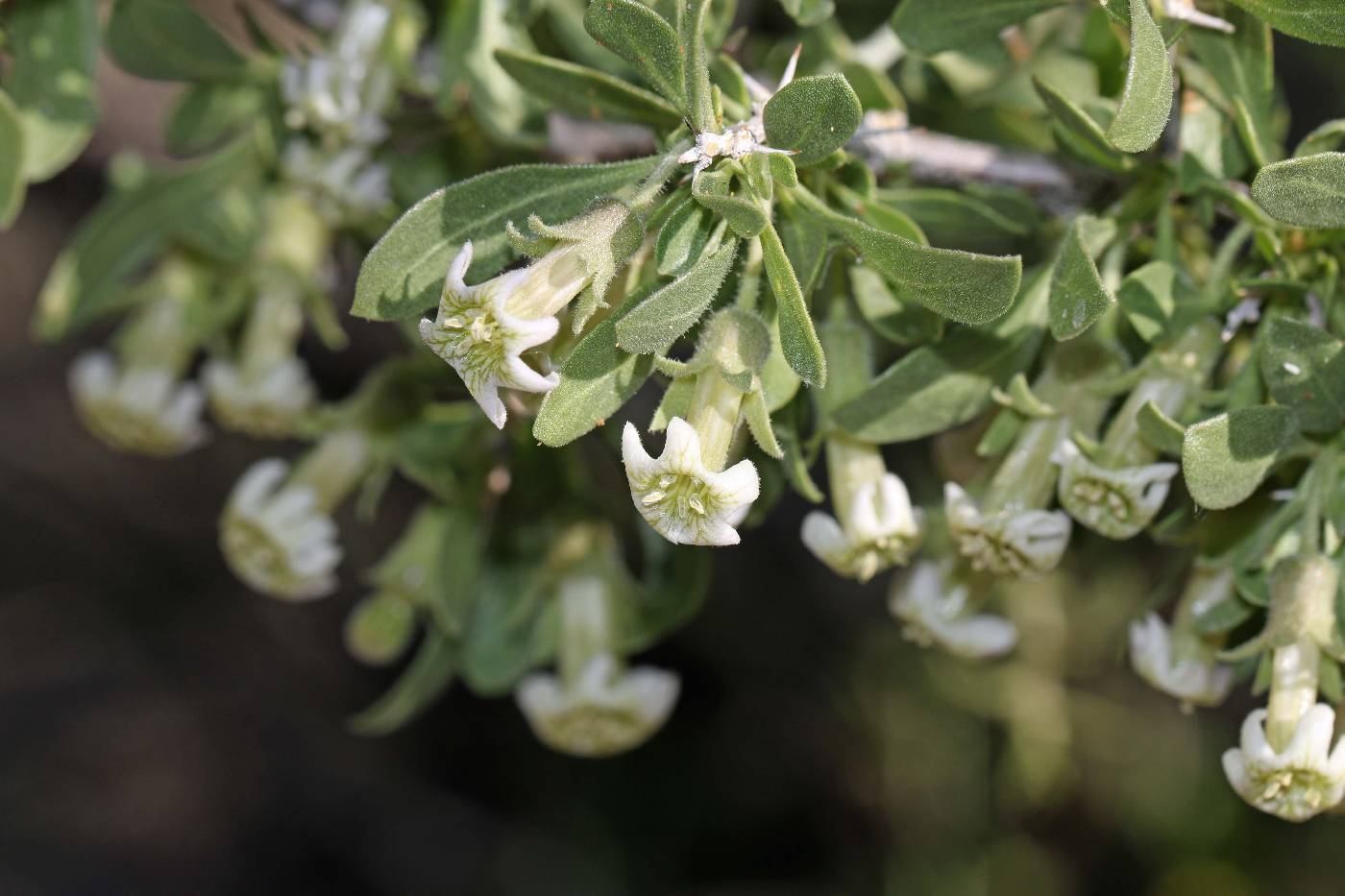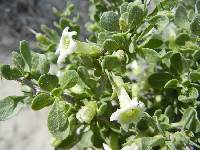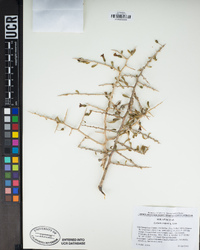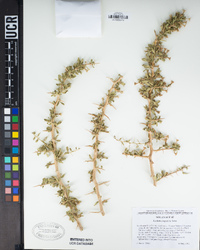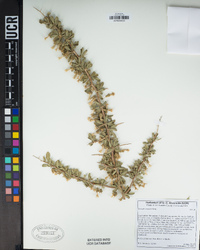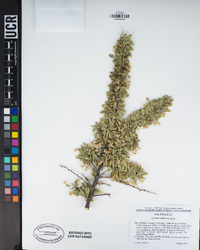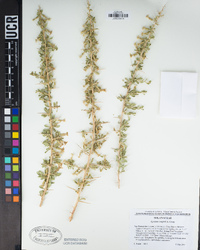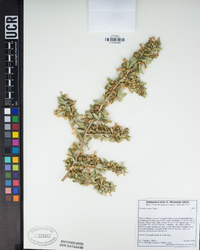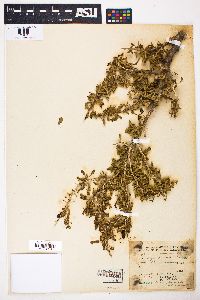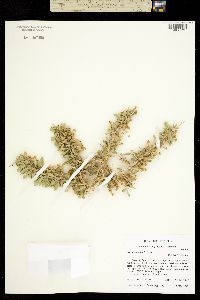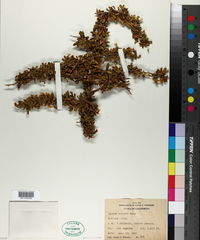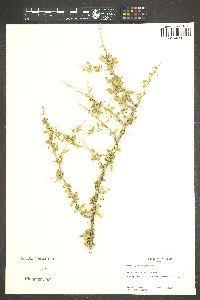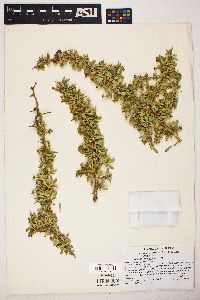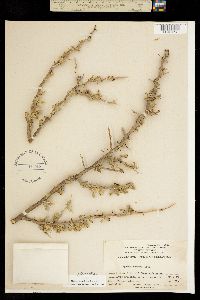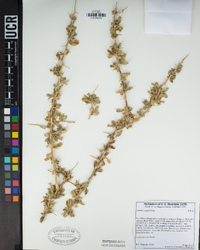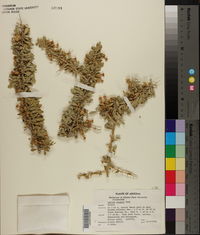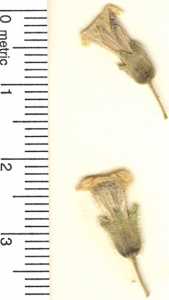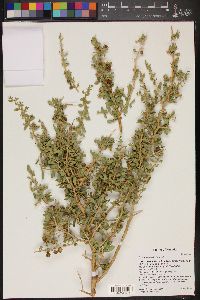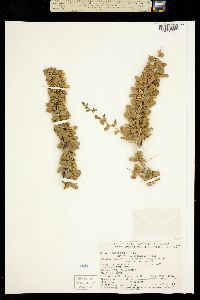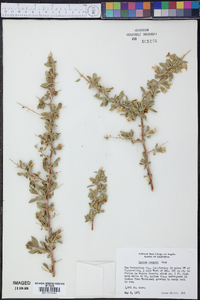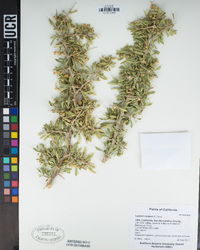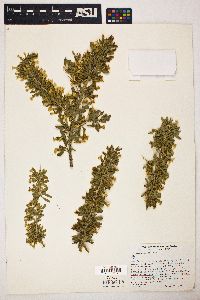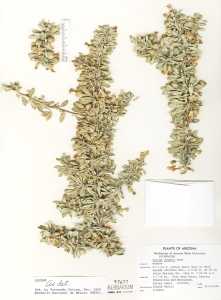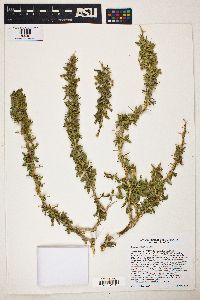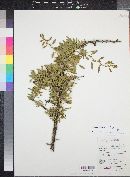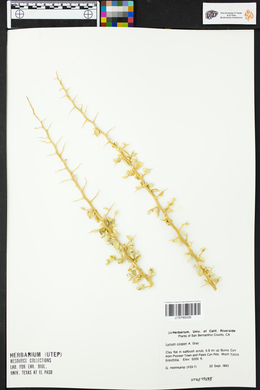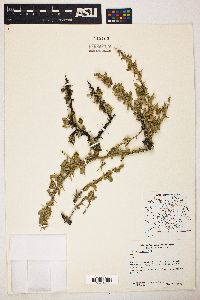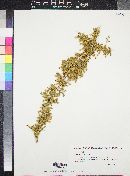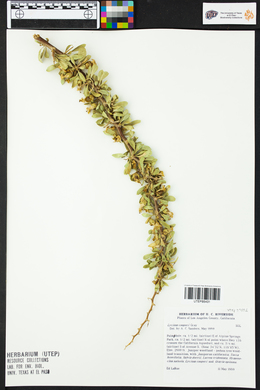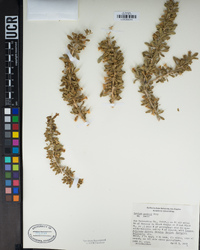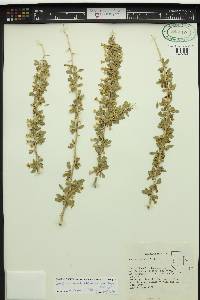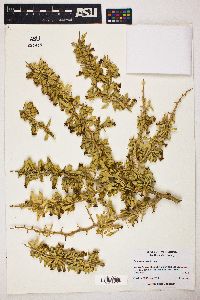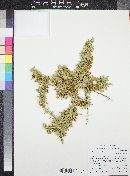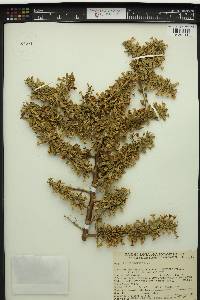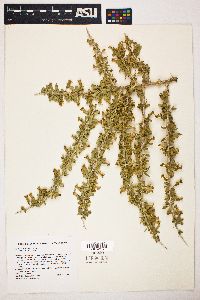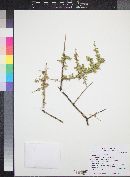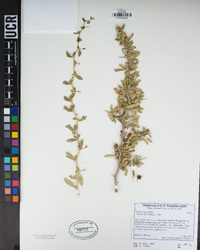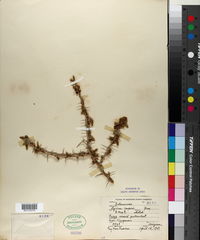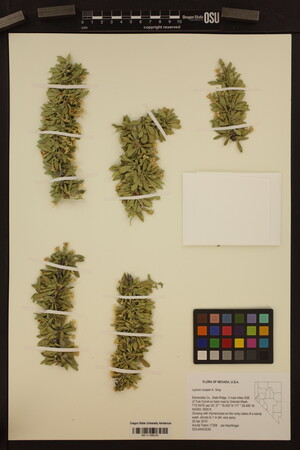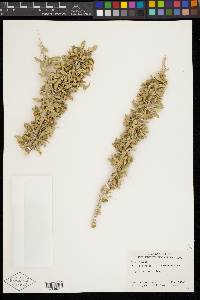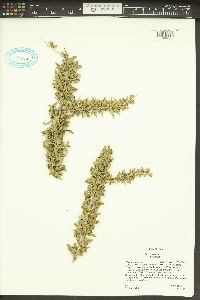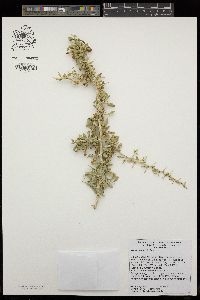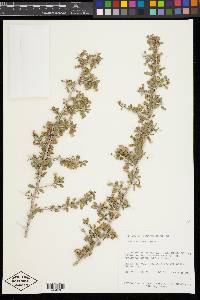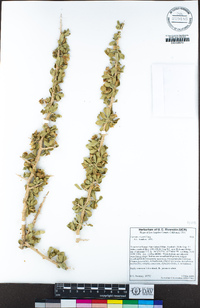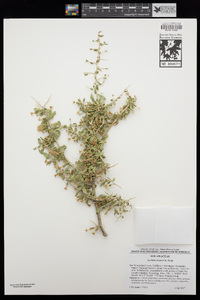Lycium cooperi
|
|
|
|
Family: Solanaceae
peach thorn, more...Peachthorn, Cooper wolfberry, Cooper's wolfberry
|
PLANT: Shrub 0.6-2 m tall, stout, densely branched, thorny, the branches thick and rigid, silvery to purplish or tan to reddish when old, minutely glandular-puberulent when young. LEAVES: 3-10 in fascicles, spatulate, oblanceolate, or obovate-spatulate to broadly obovate, 1-3.5 cm long, 0.4-1.3(-2.3) cm wide, densely glandular-pubescent or hispidulous to glabrescent; apex rounded to truncate; base attenuate; midvein and some of the lateral veins distinct. FLOWERS: numerous, pendant, 1-3 in a fascicle, the pedicels about the same length as the calyx or shorter, glandular-pubescent; calyx bowl-shaped or oblong-campanulate, 4-14 mm long, glabrate or glandularpubescent, expanding and usually rupturing with the growth of the fruit (Fig. 2E); corolla greenish white with purple veins, broadly funnelform to nearly cylindric, slightly expanded at top, densely pubescent to glabrous externally, the tube 8-15 mm long, the lobes 5, 1/4 to 1/5 the length of the tube, triangular-ovate, spreading or reflexed, with margins usually ciliate; stamens about equalling the corolla-tube or slightly included; filaments subequal, adnate from about middle of corolla-tube to about 3/4 the length; vascular strands leading to filaments very sparsely pilose at the base, the free portion of filaments glabrous; style shorter than filaments or equalling them. FRUITS: ovoid, greenish yellow, 5-10 mm long, constricted at about the middle or above; seeds 1-2 in upper portion, several (5-8) in lower half. n = 12. FRUITS: ovoid, greenish yellow, 5-10 mm long, constricted at about the middle or above; seeds 1-2 in upper portion, several (5-8) in lower half. n = 12. NOTES: Mohave Desert in AZ, in washes, flats and slopes in rocky to sandy soils: La Paz, Mohave, (perhaps Yuma) cos. (Fig. 1C); 400-1400 m (1300-4600 ft); Mar-Apr; s CA, NV, and UT. REFERENCES: Windham, M.D. And G. Yatskievych. 2009. Vascular Plants of Arizona: Isoëtaceae. CANOTIA 5 (1): 27-29, 2009. Nee 2016 (Jepson Online), Chiang and Landrum 2009 (VPAP) Common Name: peach thorn Duration: Perennial Nativity: Native Lifeform: Shrub General: Glandular-puberulent shrubs, 0.6 to 2 m tall, densely branched, thorny; branches rigidly ascending to erect, leafy; bark silvery to purplish or tan to reddish when old, minutely glandular-puberulent when young. Leaves: Clustered in fascicles of 3-10 leaves, the fascicles alternate along the stems; blades 1-3 cm long, oblanceolate to obovate, densely glandular-pubescent or hispidulous to glabrescent, apex rounded to truncate, base attenuate, midvein and some of the lateral veins distinct. Flowers: Pendant on glandular-pubescent pedicels 4-14 mm long, clustered in fascicles of 1-3; calyx 8-15 mm long, narrowly bell-shaped and topped with 4-5 lobes, these 2-3 mm long and half or more the length of the calyx tube; corolla narrowly funnel-shaped, green-white and lavender-tinged or -veined, glabrous or puberulent on the outside, the tube 9-12 mm long and topped with 5 ovate-triangular lobes; stamens more or less exserted from the corolla and attached at the middle of the corolla tube. Fruits: Berries ovoid, 5-9 mm long, greenish-yellow to orange, with 2 cross-grooves above the middle, containing several seeds. Ecology: Found on sandy to rocky flats and in washes, from 1,000-5,000 ft (305-1524 m); flowers March-May. Distribution: s CA, s NV, sw UT and w AZ Notes: This species is found along the AZ-CA border and west into the southern California desert, from Joshua Tree to Death Valley. In the key it is distinguished from other Lycium spp. by its calyx, which is moderately pubescent and truncate at the base (the base is squared off rather than rounded or pointed), with lobes that are reflexed (pointing downward) and not much shorter than the tube; the corolla tube which is more cylindrical than funnel or bell- shaped; and the fruits which are constricted at the middle. Look also for the glandular-pubescence on the leaves, and the yellow to orange color and firm (rather than soft) texture of the mature berries. It is easily distinguished from the common and widespread L. andersonii by the leaves which are flat in cross section and usually glandular-pubescent or at least with some sort of hairs (L. andersonii has semi-succulent leaves which are rounded in cross section and hairless.) Ethnobotany: Not specified with this species, but berries are probably edible. Etymology: Lycium is from Greek name Lykion, used to describe a thorny tree or shrub; cooperi honors J.G. Cooper, collector of the type specimen. Synonyms: Lycium pallidum var. cooperi Editor: AHazelton 2016 |

